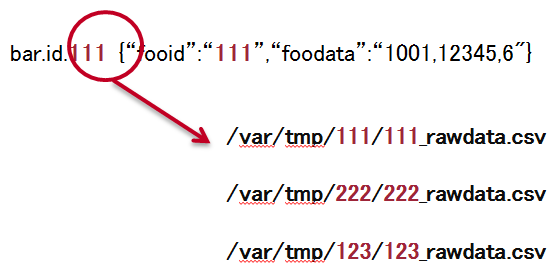NIFI 공부에 도움되는 문서
https://nifi.apache.org/docs/nifi-docs/html/user-guide.html
https://www.slideshare.net/KojiKawamura/apache-nifi-10-in-nutshell
https://nifi.apache.org/docs/nifi-docs/html/user-guide.html#Reporting_Tasks
* nifi 1.4 (최신) 설치
https://nifi.apache.org/download.html
* 설정
미리 zk 설정되야 한다.
<nifi.properties 수정>
nifi.web.http.host=장비 이름
nifi.cluster.is.node=true
nifi.cluster.node.address=장비 이름
nifi.zookeeper.connect.string=zk서버들
nifi.zookeeper.connect.timeout=3 secs
nifi.zookeeper.session.timeout=3 secs
nifi.zookeeper.root.node=/samuel-nifi
<bootstrap.conf 수정>
# JVM memory settings
java.arg.2=-Xms16g
java.arg.3=-Xmx16g
* 시작
5대를 클러스터링할 수 있도록 설정을 수정하니 약 3분 정도 소요된다. (완전 좋은 장비를 이용했다)
클러스터링 시작 시간은 3분(디폴트)이며 수정가능하다. 수정한 내용은 뒤에서 설명..
$ bin/nifi.sh start
Java home: /usr/java/default
NiFi home: /home/deploy/nifi-1.4.0
Bootstrap Config File: /home/deploy/nifi-1.4.0/conf/bootstrap.conf
* 확인하기
$ bin/nifi.sh status
Java home: /usr/java/default
NiFi home: /home/deploy/nifi-1.4.0
Bootstrap Config File: /home/deploy/nifi-1.4.0/conf/bootstrap.conf
2017-12-07 15:30:32,753 INFO [main] org.apache.nifi.bootstrap.Command Apache NiFi is currently running, listening to Bootstrap on port 57300, PID=60012
로그(logs)를 보면서 정상적으로 동작하는 지 확인할 수 있다.
* 중지/재시작 후
$ bin/nifi.sh stop
$ bin/nifi.sh start
* 설정 수정
1. master election 시간은 5 mins이라서 수정하는 것이 좋다.
nifi.cluster.flow.election.max.wait.time=1 mins
2. nifi 웹에서의 디폴트 타임아웃이 응근히 짧다. 5초인데.. single web application으로 구현된 UI라 좀 걸릴 수 있어서 느리게 해도 된다.
nifi.cluster.node.connection.timeout=30 sec
nifi.cluster.node.read.timeout=30 sec
3. 그룹 Thread 디폴트 값은 1이라서 그룹 Thread 크기를 늘리는 것이 좋다.
Maximum Timer Driven Thread Count
Maximum Event Driven Thread Count
4. 커보로스 파일 설정은 다음과 같다.
nifi.kerberos.krb5.file=/etc/krb5.conf
5. 재시작시 자동 플레이(autoresume)이 안되게 한다.
빅 데이터 처리로 이미 클러스터링이 깨진 상태에서
nifi.flowcontroller.autoResumeState=false
* 주의 할 점
1.
하둡 관련된 부분을 수정하면 nifi 전체 재시작을 해야 한다. 바로 동작되지 않는다.
2.
클러스터링이 끊어진 상태에서 특정 서버에서만 설정을 바꾼 경우.. 다
서버 상태는 Status라고 나오지만,, 다음과 같은 에러가 발생할 수 있다.
2017-12-07 19:22:40,170 ERROR [main] o.a.nifi.controller.StandardFlowService Failed to load flow from cluster due to: org.apache.nifi.controller.UninheritableFlowException: Failed to connect node to cluster because local flow is different than cluster flow.
org.apache.nifi.controller.UninheritableFlowException: Failed to connect node to cluster because local flow is different than cluster flow.
at org.apache.nifi.controller.StandardFlowService.loadFromConnectionResponse(StandardFlowService.java:937)
문제된 서버에 클러스터링된 conf/flow.xml.gz을 삭제하고 다른 서버의 conf/flow.xml.gz을 복사한 후, 재시작하면 잘 연결된다.
nifi.properties에 설정 파일을 가르킬 수 있다.
nifi.flow.configuration.file=./conf/flow.xml.gz
3.
스토리지가 죽으면 nifi는 열리지 않는다.. bottleneck은 스토리지이다. 최대 개수의 효과를 누리고 싶지만 잘못하고 connection 수가 너무 많아 storage 죽을 수 있다는 점을 명심할 필요가 있다.
4.
nifi web이 동작하지 못할 정도로 문제가 되어 강제 재시작하면 다음 에러가 발생할 수 있다.
2017-12-07 20:43:38,006 ERROR [NiFi logging handler] org.apache.nifi.StdErr
2017-12-07 20:43:38,007 ERROR [NiFi logging handler] org.apache.nifi.StdErr Exception: java.lang.OutOfMemoryError thrown from the UncaughtExceptionHandler in thread "logback-1"
2017-12-07 20:44:32,213 ERROR [NiFi logging handler] org.apache.nifi.StdErr
2017-12-07 20:44:32,213 ERROR [NiFi logging handler] org.apache.nifi.StdErr Exception: java.lang.OutOfMemoryError thrown from the UncaughtExceptionHandler in thread "cluster1-timeouter-0"
2017-12-07 20:44:56,169 ERROR [NiFi logging handler] org.apache.nifi.StdErr
2017-12-07 20:44:56,169 ERROR [NiFi logging handler] org.apache.nifi.StdErr Exception: java.lang.OutOfMemoryError thrown from the UncaughtExceptionHandler in thread "Listen to Bootstrap"
2017-12-07 20:45:08,175 ERROR [NiFi logging handler] org.apache.nifi.StdErr
2017-12-07 20:45:08,175 ERROR [NiFi logging handler] org.apache.nifi.StdErr Exception: java.lang.OutOfMemoryError thrown from the UncaughtExceptionHandler in thread "Provenance Maintenance Thread-2"
2017-12-07 20:46:08,291 ERROR [NiFi logging handler] org.apache.nifi.StdErr
2017-12-07 20:46:08,292 ERROR [NiFi logging handler] org.apache.nifi.StdErr Exception: java.lang.OutOfMemoryError thrown from the UncaughtExceptionHandler in thread "StandardProcessScheduler Thread-7"
2017-12-07 20:46:14,292 ERROR [NiFi logging handler] org.apache.nifi.StdErr
2017-12-07 20:46:14,293 ERROR [NiFi logging handler] org.apache.nifi.StdErr Exception: java.lang.OutOfMemoryError thrown from the UncaughtExceptionHandler in thread "Provenance Maintenance Thread-3"
2017-12-07 20:47:14,481 ERROR [NiFi logging handler] org.apache.nifi.StdErr
2017-12-07 20:47:14,482 ERROR [NiFi logging handler] org.apache.nifi.StdErr Exception: java.lang.OutOfMemoryError thrown from the UncaughtExceptionHandler in thread "Timer-Driven Process Thread-37"
그래도 안되면 재시작하고.. 다시 재시작하면 된다.
그러면서 NIFI는 split brain (split network)이 생기기도 하니..
최대한 NIFI를 죽지 않게 잘 운영하는 것이 중요한 부분이 되지 않을까 생각되었다. cpu 부하가 50%를 넘게 하지 않는 운영의 묘가 필요한 것 같다.
5. 모니터링 정보는 다음과 같다.
https://nifi.apache.org/docs/nifi-docs/rest-api/
https://community.hortonworks.com/questions/69004/nifi-monitoring-processor-and-nifi-service.html


 tail-cassandra.xml
tail-cassandra.xml





